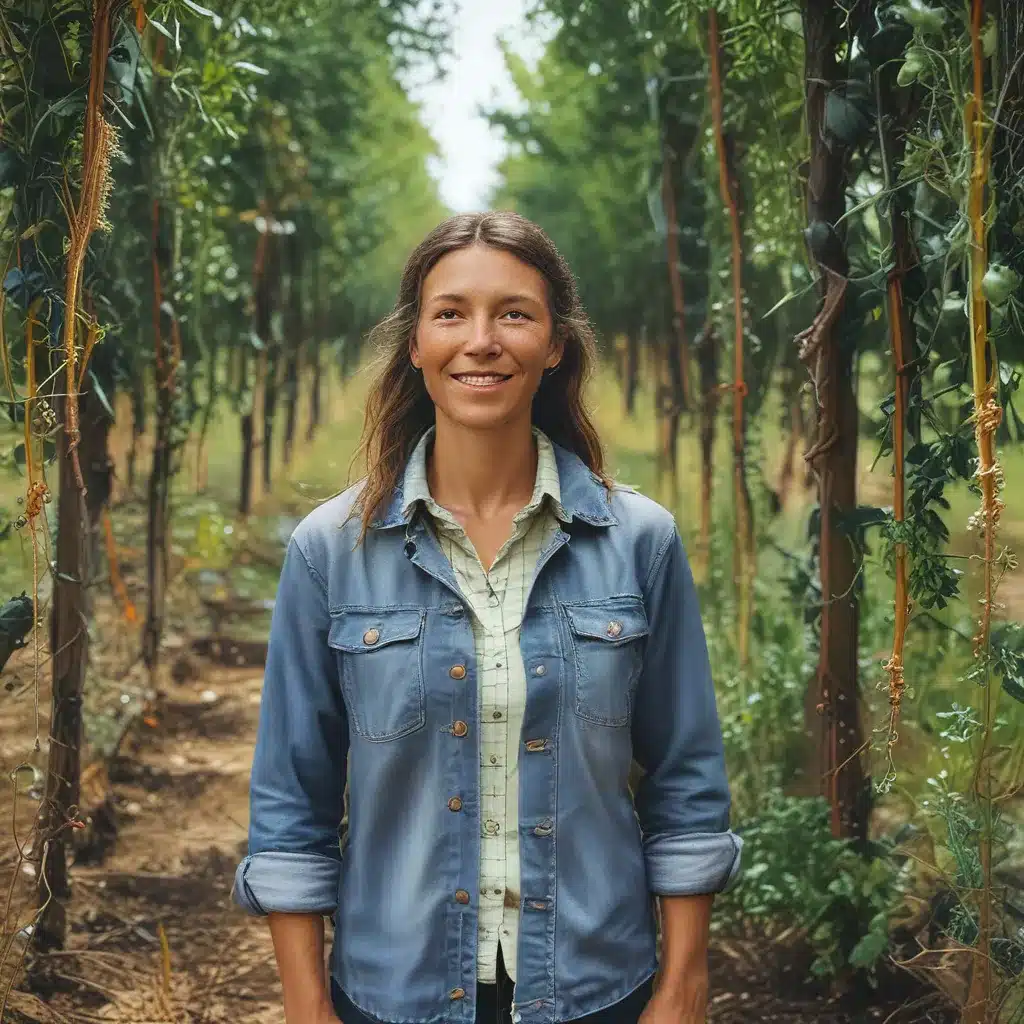
Uncovering the Secrets of Regenerative Agriculture
As I stroll through the lush, verdant fields of Thornappple CSA, I can’t help but feel a sense of wonder and reverence. The rhythmic rustling of leaves, the buzzing of bees, and the rich, earthy scent all come together to create a symphony of nature’s harmony. It’s a far cry from the sterile, industrialized farms I grew up with, where monocultures and chemical inputs were the norm.
But this isn’t just any ordinary farm – it’s a shining example of the regenerative revolution that’s sweeping through the agricultural landscape. Here, the farmers have embraced a holistic approach that not only produces bountiful, nutrient-dense crops but also actively restores the health of the land, the ecosystems, and the communities that depend on it.
Rejuvenating the Soil: The Foundation of Regenerative Agriculture
At the heart of this regenerative revolution lies a deep respect for the soil – the living, breathing foundation upon which all life depends. Regenerative agriculture recognizes that the health of the soil is inextricably linked to the health of the entire ecosystem, from the tiniest microorganisms to the towering trees.
Instead of relying on synthetic fertilizers and pesticides, the farmers at Thornappple CSA nurture the soil through a carefully curated blend of organic matter, cover cropping, and minimal tillage. The result? A thriving, diverse web of life that not only supports the growth of their crops but also sequesters carbon, enhances water retention, and reduces the need for external inputs.
Embracing Biodiversity: The Key to Resilience
As I wander through the fields, I’m struck by the sheer abundance of life – not just the crops themselves, but the vibrant tapestry of pollinators, birds, and other beneficial organisms that call this place home. This is no accident; the farmers here have deliberately cultivated a diverse ecosystem, understanding that biodiversity is the key to resilience in the face of a changing climate.
Regenerative agriculture is not just about growing food; it’s about rebuilding the intricate connections that make our natural world thrive. By planting a wide variety of crops, using companion planting techniques, and providing habitats for beneficial insects, the farmers at Thornappple CSA have created a self-sustaining system that is far more resilient than the monocultures of the past.
Harnessing the Power of Biomass
As I delve deeper into the regenerative practices at Thornappple CSA, I’m struck by the ingenious ways they harness the power of biomass to fuel their operations. Regenerative agriculture is all about closing the loop – turning waste into valuable resources and minimizing the need for external inputs.
The farmers here compost all of their organic matter, from crop residues to animal manure, creating a nutrient-rich soil amendment that they then incorporate back into the fields. But that’s just the beginning – they also use biomass-powered machinery, such as tractor-mounted composters and biomass-fueled greenhouses, to further reduce their reliance on fossil fuels and create a truly self-sustaining system.
Empowering the Community
As I sit down with the farmers over a hearty, farm-fresh meal, I’m reminded that regenerative agriculture is about more than just growing food – it’s about strengthening the bonds within the community. The members of Thornappple CSA are more than just customers; they’re active participants in the journey of food production, from seeding to harvesting to preserving.
Through regular workshops, farm tours, and volunteer opportunities, the farmers at Thornappple CSA engage their community in the regenerative process, sharing their knowledge and fostering a deeper appreciation for the land. It’s a symbiotic relationship, where the community supports the farm, and the farm, in turn, nourishes the community – both physically and spiritually.
The Path Forward: Scaling the Regenerative Revolution
As I reflect on my time at Thornappple CSA, I’m filled with a sense of optimism and excitement for the future of agriculture. The regenerative revolution is gaining momentum, and farms like this one are leading the way, proving that it’s possible to produce abundant, nutritious food while actively restoring the health of the land and the communities that depend on it.
But the journey is far from over. Companies with agriculture and land use in their value chains are already feeling the effects of a changing climate, and they must take holistic action to address the associated environmental and social risks. Regenerative agriculture offers a viable solution, not only for large-scale operations but also for individual consumers who are seeking a more sustainable and equitable food system.
As I leave Thornappple CSA, I can’t help but feel inspired by the resilience and ingenuity of the farmers who have chosen to walk this path. Their story is a testament to the power of nature, the wisdom of tradition, and the transformative potential of human innovation. And I, for one, am eager to join them in the regenerative revolution.



